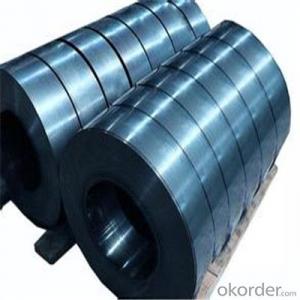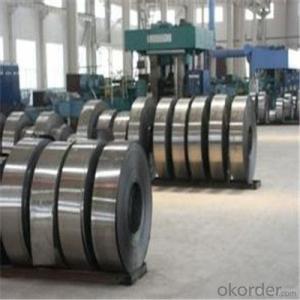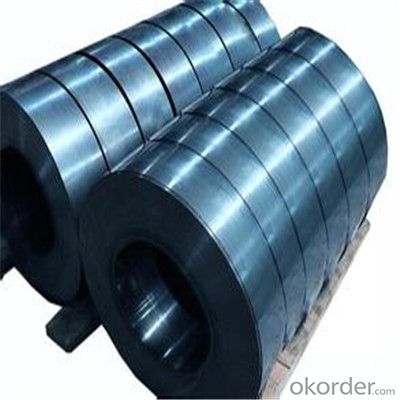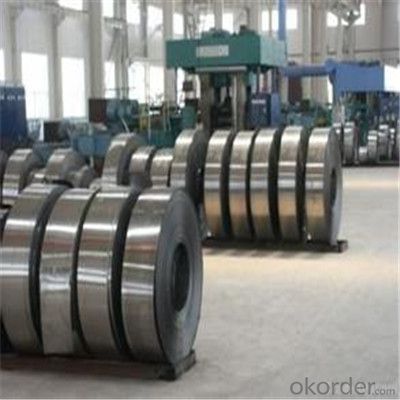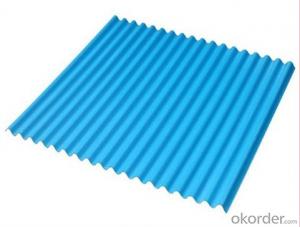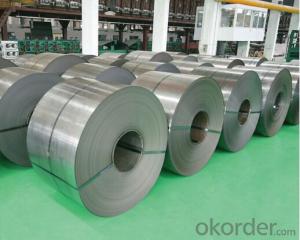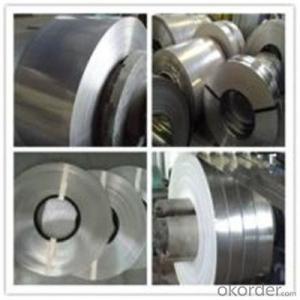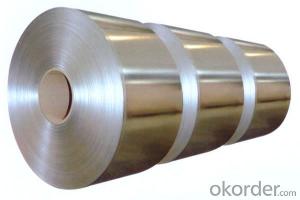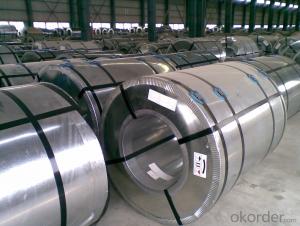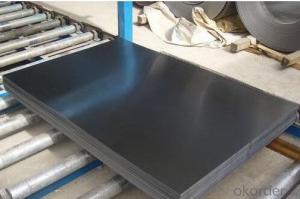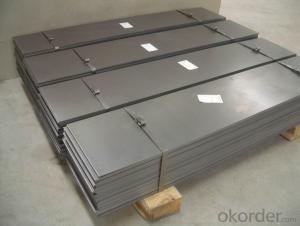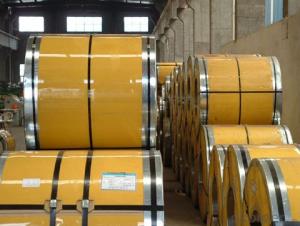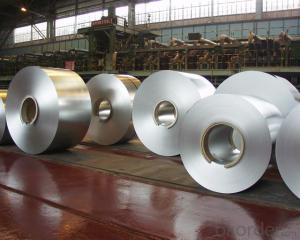Cold Rolled Steel Strip Coils in Various Materials from China
- Loading Port:
- Qingdao
- Payment Terms:
- TT OR LC
- Min Order Qty:
- 66 m.t.
- Supply Capability:
- 1222665 m.t./month
OKorder Service Pledge
OKorder Financial Service
You Might Also Like
Specification
Description of Steel Strip Coils:
Steel strips is one of our main products that is widely used in making band saw blade & other blades to cut paper, weed, etc.
Festures of Steel Strip Coils:
1.Thickness: 0.14-3.0mm
2.width:30-600mm
3.zinc coating: 30-275g
4.material:Q195, Q235,SGCC, A653 CS-B, DX51D,SGCD,SGHC,S350GD,S450GD,S550GD
5.spangle: zero spangle, regular spangle, small spangle
6.surface treatment: chromated and oiled, chromated and non-oiled
7.packing: export standard packing
8.Payment: TT or L/C
9.MOQ: 25TON
10.coil weight: 3-4ton
11.quality: soft or hard quality
Specifications of Steel Strip Coils:
1)Material:SPCC,SPHC,Q195,Q235,Q345,Q345B
2)Thick:0.15-3.0mm
3)Width:30-700mm
4)Zinc coating:Z6 to Z27(60g/m2 to 275g/m2, double sides)
5)Surface condition:Regular spangle
6)Coil ID:508mm
7)Coil OD:1000~1500mm
8)Packaging Detail: Export standard package,with PVC,steel cover.
9)productive capacity:6500tons per month
Images of Steel Strip Coils:
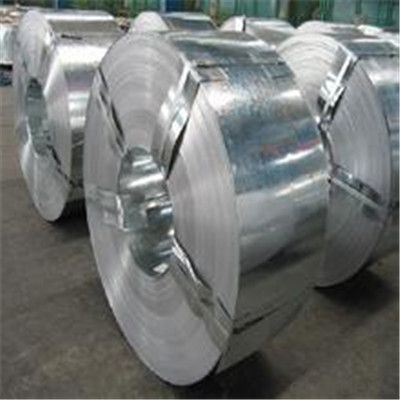
FAQ
1.What's your MOQ?
25MT, it is for one container.
2.Do you have QC teams?
Yeah, sure, our QC team is very important, they will keep the quality control for our products.
3. What's your normal delivery time?
Our delivery time about 10-20days for standard sizes, if you have other requirements like hardness and width ,it is about 20-40days.
- Q: How do steel strips respond to different surface painting processes?
- Different surface painting processes yield different responses from steel strips, depending on the specific method employed. Commonly used processes for painting steel strips include electroplating, powder coating, and liquid paint application. Electroplating involves depositing a layer of metal onto the steel strip surface using an electric current. This method offers excellent corrosion resistance, as the metal layer acts as a protective barrier. However, its impact on the mechanical properties of the steel strip may make it unsuitable for certain applications. Powder coating entails applying a dry powder to the steel strip surface, which is then heated to create a chemical reaction that forms a durable and protective coating. This process is renowned for its superior adhesion, resistance to chipping, scratching, and fading. It also provides a wide range of colors and finishes, making it popular across various industries. Liquid paint application involves using liquid paint applied to the steel strip surface through techniques like spraying, brushing, or dipping. This method allows for a high degree of customization in terms of colors, finishes, and textures. However, it may not offer the same level of durability and resistance as powder coating. In conclusion, the response of steel strips to different surface painting processes depends on factors such as the intended application, desired appearance, and required level of protection. It is crucial to consider these factors and seek guidance from professionals in the field to determine the most suitable painting process for steel strips in a specific application.
- Q: What are the different types of joints used for steel strips?
- For steel strips, there are various types of joints available depending on the specific application and requirements. The most commonly used joints include: 1. Butt joint: This is the simplest and widely utilized joint for steel strips. It involves aligning the ends of two strips and joining them together through welding or bolting. 2. Lap joint: In this joint, one strip overlaps the other and is subsequently welded or bolted together. This type of joint offers enhanced strength and stability. 3. Scarf joint: A scarf joint is a variant of the lap joint where the overlapping ends are cut at an angle to create a seamless transition between the strips. This joint is often employed when a continuous appearance is desired. 4. T-joint: In a T-joint, one strip is perpendicular to the other, forming a T shape. This joint is commonly used to join steel strips at right angles. 5. Corner joint: Similar to a T-joint, a corner joint involves both strips being at a 45-degree angle, creating a corner. This type of joint is frequently utilized in box or frame structures. 6. Butt joint with backing strip: This joint employs a backing strip placed behind the joint to provide additional support and strength. The backing strip is typically joined to the steel strips through welding or bolting. 7. Overlap joint: In an overlap joint, one strip is positioned over the other with a small gap between them. This joint is commonly found in applications where flexibility is required, such as in conveyor belts. These examples showcase only a few of the available joint options for steel strips. The choice of joint will depend on factors such as strength requirements, the application, and the desired final appearance of the product.
- Q: How are steel strips used in the renewable energy industry?
- Steel strips are used in the renewable energy industry for various purposes such as manufacturing wind turbines, solar panels, and other renewable energy infrastructure. They are used to create the structural components, support frames, and mounting systems that are essential for the installation and operation of renewable energy equipment.
- Q: What are the stacking guidelines for steel strips?
- The stacking guidelines for steel strips typically include ensuring a stable and level base, using dunnage or spacers between layers to prevent damage, and maintaining proper weight distribution to avoid collapse or deformation. It is also important to consider weather conditions, such as wind and rain, and to follow any specific instructions provided by the manufacturer or industry standards.
- Q: How are steel strips processed for brazing?
- To achieve a robust and long-lasting bond, steel strips undergo a series of steps during the brazing process. Firstly, thorough cleaning is carried out to eliminate any dirt, oil, or oxidation. Chemical cleaners or abrasive blasting are commonly employed for this purpose. Following the cleaning stage, a flux, a chemical compound that prevents oxidation during brazing, is applied to the steel strips. This can be achieved by immersing the strips into a flux bath or by spraying it onto the surfaces. Once the flux is applied, the steel strips are assembled into the desired configuration, with filler material or components added as necessary. To ensure proper alignment during brazing, the assembly is tightly clamped or fixtured. The actual brazing process involves heating the steel strips and filler material to a specific temperature until the filler metal melts and flows into the joint. Depending on the size and complexity of the assembly, this heating can be performed using a furnace or torch. Once the desired brazing temperature is reached, the steel strips are maintained at that temperature for a specific duration to allow for proper bonding. The length of time required may vary depending on the thickness and composition of the steel strips. Upon completion of the brazing process, the steel strips are gradually cooled to prevent thermal stresses or distortion. After cooling, the assembly is thoroughly inspected for defects or imperfections, and any necessary post-braze operations, like cleaning or machining, are carried out. In summary, the brazing of steel strips necessitates meticulous cleaning, application of flux, precise assembly, controlled heating, and thorough inspection to ensure a bond of exceptional quality.
- Q: How are steel strips processed for wear resistance?
- Steel strips can undergo various processes to enhance their wear resistance. One common method is through heat treatment, where the steel strips are heated to a specific temperature and then cooled rapidly to form a hardened surface. This process, known as quenching and tempering, helps to increase the hardness and strength of the steel, making it more resistant to wear. Another technique used is the application of coatings or surface treatments. These can include processes such as electroplating, where a layer of a different metal is deposited onto the surface of the steel strip, creating a protective barrier against wear. Other surface treatments like nitriding or carburizing can also be employed to increase the surface hardness and wear resistance of the steel strip. Additionally, steel strips can be subjected to mechanical processes like shot peening or grinding. Shot peening involves bombarding the surface of the strip with small metallic or ceramic particles, which induces compressive stresses and improves its resistance to fatigue and wear. Grinding, on the other hand, removes a thin layer of material from the surface, exposing fresh, harder layers underneath and improving wear resistance. Overall, the processing of steel strips for wear resistance involves a combination of heat treatment, surface coatings, and mechanical treatments. These techniques help to improve the hardness, strength, and overall durability of the steel, making it more suitable for applications where wear resistance is crucial.
- Q: How are steel strips different from steel coils?
- Steel strips and steel coils differ in terms of their shape and size. Steel strips are narrow, flat pieces of steel that are typically less than 600mm in width, while steel coils are large rolls of steel that can be several meters wide. Additionally, steel strips are usually produced by cutting larger coils into narrower strips, whereas steel coils are directly produced in the desired size.
- Q: How are steel strips used in the manufacturing of automotive components?
- Due to their versatility and durability, steel strips serve as a crucial element in the production of automotive parts. They are utilized in various ways throughout the manufacturing process. To begin with, steel strips are commonly employed in the creation of body panels and structural components. They are cut and shaped to build the framework and outer shell of the vehicle, providing it with strength and rigidity. The high tensile strength of steel makes it an ideal material for enduring the forces and impacts experienced by automobiles. Furthermore, steel strips are involved in the fabrication of automotive springs, such as suspension and clutch springs. These strips are shaped into the desired form and then subjected to heat treatment to achieve the desired elasticity and resilience. By using steel strips, these critical components can support the weight of the vehicle and offer a smooth and comfortable ride. Moreover, steel strips find their application in the production of automotive fasteners, including nuts, bolts, and clips. These strips are shaped and sized through stamping or machining, ensuring strong and secure connections between various automotive components. The durability of steel guarantees that these fasteners can withstand the vibrations and forces experienced during vehicle operation. Additionally, steel strips are employed in the manufacturing of automotive exhaust systems. They are rolled, bent, and welded to create the necessary pipes and tubing for the exhaust system. Steel's ability to resist high temperatures and corrosion makes it an ideal material for this purpose. In summary, steel strips play a vital role in the manufacturing of automotive components, offering strength, durability, and versatility. Whether utilized in body panels, springs, fasteners, or exhaust systems, steel strips contribute to the overall performance, safety, and longevity of automobiles.
- Q: How do steel strips contribute to the stability of structures?
- Steel strips contribute to the stability of structures by providing reinforcement and support. They help distribute the load evenly across the structure, enhancing its overall strength and durability. Steel strips can also prevent deformation and bending, ensuring that the structure remains stable, even under significant stress or external forces.
- Q: Can steel strips be bent or formed into specific shapes?
- Yes, steel strips can be bent or formed into specific shapes through various methods such as cold bending, hot bending, or using specialized machinery like presses and rollers.
Send your message to us
Cold Rolled Steel Strip Coils in Various Materials from China
- Loading Port:
- Qingdao
- Payment Terms:
- TT OR LC
- Min Order Qty:
- 66 m.t.
- Supply Capability:
- 1222665 m.t./month
OKorder Service Pledge
OKorder Financial Service
Similar products
Hot products
Hot Searches
Related keywords
